#prince charles of bourbon two sicilies
Explore tagged Tumblr posts
Text


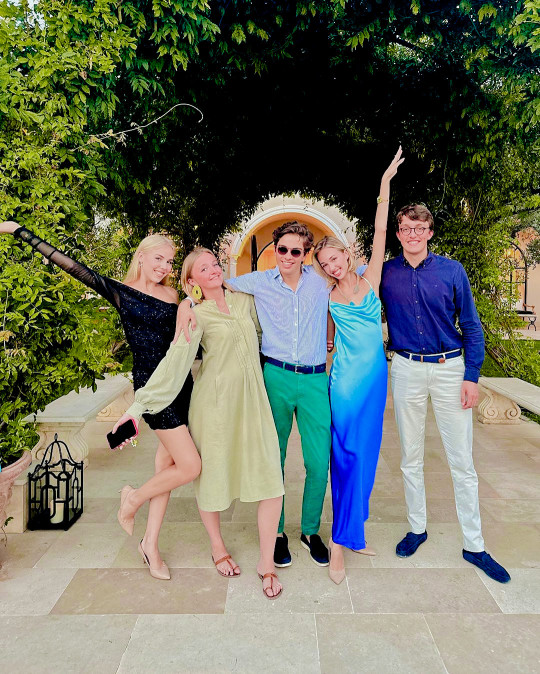

Princess Camilla of Bourbon Two Sicilies and Princess Maria Carolina of Bourbon Two Sicilies shared those pictures on their Instagram page, of themselves with Prince Carlo of Bourbon Two Sicilies, Princess Maria Chiara of Bourbon Two Sicilies, Prince Laurent of Belgium, Princess Claire of Belgium, Princess Louise of Belgium, Prince Nicolas of Belgium and Prince Aymeric of Belgium, during their summer holidays in Saint-Tropez, France -August 14th 2023.
📷 : Princess Camilla of Bourbon Two Sicilies and Princess Maria Carolina of Bourbon Two Sicilies on Instagram.
#prince charles#prince charles of bourbon two sicilies#princess camilla#princess maria carolina#princess maria chiara#royal family of bourbon two sicilies#bourbon two sicilies#prince laurent#princess claire#princess claire of belgium#princess louise#prince nicolas#prince nicolas of belgium#prince aymeric#belgian royal family#belgium#2023#august 2023#saint tropez#france#france 2023#summer holidays#summer holidays 2023#royal children#my edit
13 notes
·
View notes
Text

19 November 2015 | Prince Charles of Bourbon-two Sicilies and Princess Camilla of Bourbon-two Sicilies attend a mass at the Cathedral of Monaco during the official ceremonies during the Monaco National Day Celebrations in Monaco, Monaco. (c) Pascal Le Segretain/Getty Images
#Princess Camilla of Bourbon two Sicilies#Prince Charles of Bourbon two Sicilies#Monaco#Italy#2015#Pascal Le Segretain#Getty Images
1 note
·
View note
Text

“I heard Christian birthday gala that only direct heirs, will only will be invited and also it will be over 18, since they only made an exception for Princess Estelle who is CP Mary goddaughter. I wonder if they are going to make an exception for Charles of Luxembourg. I have a feeling the bourbon-two sicilies house will be invited since the rumors of Chiara and christian dating.” - Submitted by Anonymous
6 notes
·
View notes
Text

The Prince of Asturias, the Future Charles IV
Artist: Anton Raphael Mengs (German, 1728–1779)
Date: 1766
Medium: Oil on Canvas
Collection: Museo del Prado, Madrid, Spain
Description: Español: Retrato del príncipe de Asturias Carlos de Borbón (1748-1819), que fue hijo del rey Carlos III de España y llegaría a reinar en España como Carlos IV.
This portrait of Charles IV as the Prince of Asturias has as its pendant a portrait of his wife, María Luisa of Parma , also in the Museo del Prado. Anton Raphael Mengs had come to Spain in 1761 at the invitation of Charles III in order to serve as painter de camara , or court painter, the most prestigious appointment for an artist in the service of the king. He probably produced this canvas and its companion in 1765 as wedding portraits, for it was in that year that the prince and princess were married.
The 17-year-old prince stands elegantly, using his shotgun as a support. He wears a gray coat, black leather riding boots and the insignia of his superior status: on his breast is the insignia of the Order of the Golden Fleece , as well as those of the military orders of the Holy Spirit (which was due to the prince as a member of the House of Bourbon ) and Saint Januarius —the order founded by his father in 1738 as King of Naples and the Two Sicilies to celebrate his marriage to Maria Amalia of Saxony . Hunting on horseback, once the sole preservation of the monarchy, was no longer restricted to the royals in the eighteenth century. However, emblems of royal power persisted in iconographic representations of the hunt, which included the deer, in whose pursuit the prince's valor and firmness would be tested, or the dog that, in images of kings and princes, symbolized the loyalty of their subjects.
Charles IV was born in 1748 in Portici , Naples , and could therefore be considered a foreigner under Spanish law. As such, his right to the throne could theoretically have been challenged, yet here he is presented as the natural heir to the Crown and, together with his wife, the guarantors of the dynasty's preservation in the future.
#portrait#oil on canvas#charles iv#king of spain#anton raphael mengs#german art#prince of asturias#landscape#standing#dog#shotgun#grey coat#hunter#leather riding boots#order of the golden fleece#europea art#18th century#spanish history#spanish monarchy
16 notes
·
View notes
Text
Prince Laurent of Belgium
CHAPTER TWO: Vacation on the Mediterranean Sea

Featuring Prince Laurent of Belgium and Prince Carlo, Duke of Castro
I'm a crew hand working on the luxury yacht, Charles, where we float rich people around to see places on the Mediterranean Sea near Saint-Tropez for weeks on end. You'd think I'd be bored the whole time, but there's also quite a number of men who propositioned me, including many married guys. I obliged when I was super horny. And today's group were Prince Laurent of Belgium and Prince Carlo of Bourbon-Two Sicilies who wanted to spend time with their wives and children.
There was very little conversation during the first days of the journey, in fact I'd say hardly any at all, if you don't include the introductions. We had Prince Carlo, a handsome man with your typical trophy wife. And Prince Laurent, the younger brother of King Philippe and the so-called “black sheep” of the Belgian Royal Family, who conveyed an unspoken lust and desire in his eyes.

Today, while the wives and children were on shore shopping the afternoon away, the princes were enjoying a dip in the Mediterranean and sunbathed under protective umbrellas on the upper deck. I was performing my duties when I heard noises coming from the upper deck of the yacht. Thinking of getting a glimpse of the princes for some j/o material later, I crept quietly to the upper deck. As I got closer, I recognized the type of sound I was hearing. The sound of moaning, groaning, the dirty talk, and the sound of flesh slapping against flesh all told me that there were some heavy-duty fucking going on.
I stopped, thinking that maybe I shouldn't intrude on the princes' private moment, that maybe they brought a lady-friend on board. I was about to retreat when I remembered no one came aboard recently and noticed the voices.
"Oh fuck! Pound it deeper into my ass, Carlo!"
Holy shit! That was the voice of Prince Laurent being fucked by Prince Carlo! I stood there in shock, discovering this sexual act between the two men. Wanting to see them in the act, to see Carlo pummeling Laurent, reaching his climax while his dick was deeply embedded in his ass. I crept closer and slowly stuck my head out to see.
There, on a lounge chair, was Prince Laurent, splayed on his belly, his head buried into the chair. Behind him, Prince Carlo was viciously pounding his ass with no mercy. The sound of moaning and heavy breathing, along with the loud slapping sound of hips crashing against butt reverberating through the air. Unconsciously, I pulled out my now erect cock and began to stroke it. And without realizing it, I close my eyes and gasp audibly. When I opened my eyes, both princes were looking at me.
I was caught. The thought shocked me so much that I stumbled backward, tripped over one of the patio chairs and hit the floor. Then the next thing I knew, Prince Carlo was standing over me.
“What in Hell are you doing!” He asked as he reached down to give me a hand getting up.
As I got to my feet, I suddenly realized that he was still naked with his cock only inches from my own dick.
“Ah... ah...” I started trying to explain, but just didn’t know what to say.
We stared at each other's dicks for a long moment before he grabbed me by the back of the neck and pushed me towards Laurent.
“You're gay. Aren’t you?” He asked.
I couldn’t have lied if I wanted to. I was so frightened. I just nodded my head.
"That's why you've been hanging around us. You were looking to suck our cocks?” He asked, his blue eyes unwavering.
I tried to talk but couldn’t and just nodded my head.
"You you want to watch me finish fucking Laurent? Carlo asked. I nodded my head eagerly. “Then suck me a little and get it good and hard.” He added.
I couldn’t believe this was happening. But it was! I dropped to my knees in front of the prince and grabbed his thick cock in one hand and guided it to my mouth. Damn it. The thing was so thick that I could hardly deep throat it and just tongued the delicious head. I glanced up into his blue eyes. I enjoyed him looking down at me as I sucked the head of his cock. He tried to push more of his thick cock down my throat, but I gagged so badly that he stopped trying. Finally he pushed my head away from his dick and ordered, “Laurent, show him how to suck cock!”
The Belgian prince quickly knelt down in my place as I moved back. Then as I watched, Carlo grabbed him by the back of the head and pulled his face toward his crotch as he guided his dick to Laurent’s opened mouth. I couldn’t believe my eyes as Laurent took inch after inch of Carlo's cock down his throat until his lips were pressed against his crotch.
“You didn’t know Laurent was such a good cocksucker did you? He’s been doing nothing but talking about you since he saw you. He wants you to fuck his ass. Ain’t that right, Laurent?”
The Belgian prince grunted as he moved his mouth up and down the thick shaft of Carlo's cock.
“Get behind him and fuck him while he sucks me. Get his asshole ready for my cock.” Prince Carlo ordered.
I stripped my clothes off in a hurry, spit in my hand to wet my cock head and shaft. I expected it to be difficult to force my thick dick into Laurent’s asshole, but it slid in almost effortlessly. Then I thought of how many times Carlo must have used his big cock on his ass and understood why my dick slid in so easily. It was pure heaven pushing my dick inside of the prince's asshole as I watched him deep throating Carlo's cock. And in seconds, I had Laurent moaning and wiggling his ass as pound his ass.
Carlo then grabbed Laurent's head in both hands and started fucking the prince's mouth as hard and fast as possible. And the amazing thing was that Laurent didn’t gag. He took the mouth fucking like it was nothing. I got so excited that I reached around Laurent as I fuck him and grabbed his stubby thick cock. Then as I fuck his opened asshole, I jacked his dick. Suddenly I was cuming inside Laurent’s ass. He sensed it and wiggled his ass against my crotch as he enjoyed my load squirting deep inside of him.
“You finished with him?” Carlo asked as I pulled my dick out of Laurent's cum dripping hole.
I nodded yes as I watched Carlo pull his thick cock out of Laurent's mouth and walk around to his ass. I moved aside only enough to allow Carlo to guide his cock into Laurent's cum leaking asshole. Carlo rammed his dick as deep as it would go into Laurent's used asshole on the first stroke. Laurent arched his back and grunted as as the prince started fucking his ass hard and fast.
Watching the two princes going at it caused me to get so excited that my dick popped back up. Suddenly I had to join in on the fun, so I scooted under Laurent's belly. Staring down at me was his stubby fat cock and the huge hanging balls of Carlo of Bourbon-Two Sicilies. I started sucking Laurent's cock and grabbed Carlo's nuts, squeezing them. He let out a cry, but didn’t tell me to stop so I continued to tighten my grip on them as I deep throated Laurent's cock. And from my position underneath Laurent, I watched as Carlo's huge dick moved in and out of Laurent's asshole.
Suddenly, Carlo shot off. He jerked his dick out of Laurent's asshole and shot his load of cum on my face just as the Belgian prince came in my mouth. Hell, I had cum on me from head to dick when they finished shooting their wads.
The three of us lay in a heap for several moments. Laurent was the first one to get up. He glanced down at me in a strange way before asking, “You ain’t going to tell anyone about this are you?”
“Never. I would never do something like that.”
“Get dressed and let's find a room. I still want to fuck you. You think you can take my cock?” Carlo asked as he got to his feet and reached down and pulled me up.
“I’d love to try.” I said with a smile from ear to ear.
#Prince Laurent of Belgium#fan fiction#Vacation on the Mediterranean Sea#Prince Carlo Duke of Castro#prince laurent#prince carlo#royalty#prince royal person
49 notes
·
View notes
Text


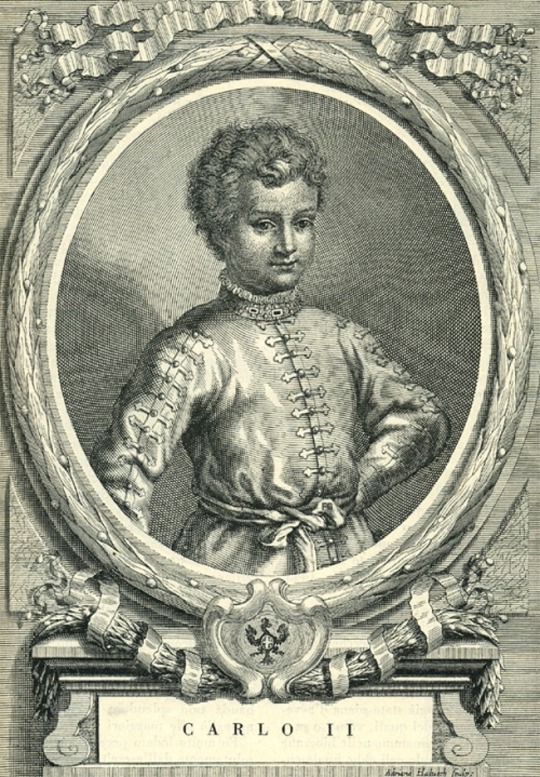
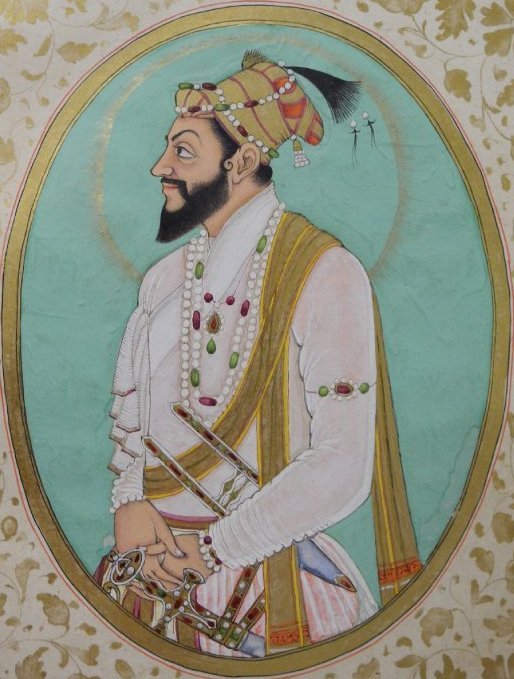
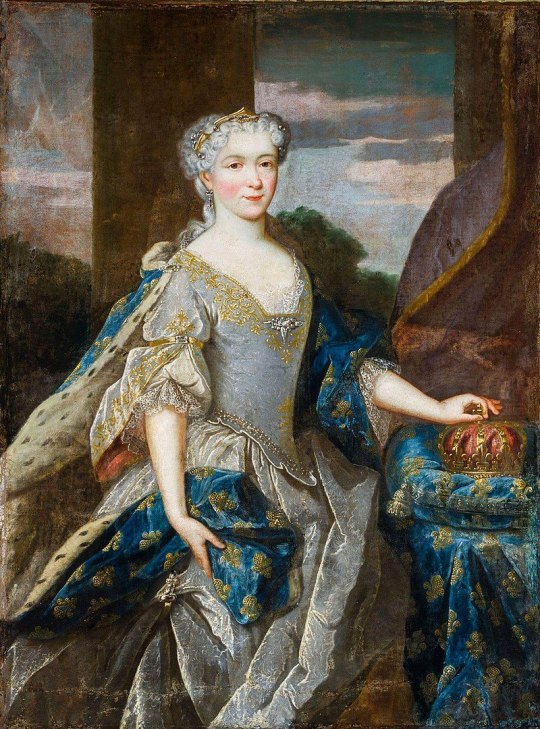
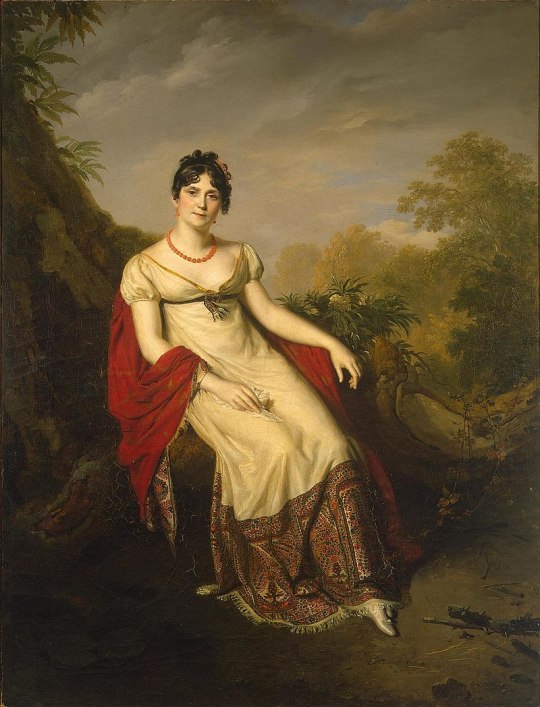
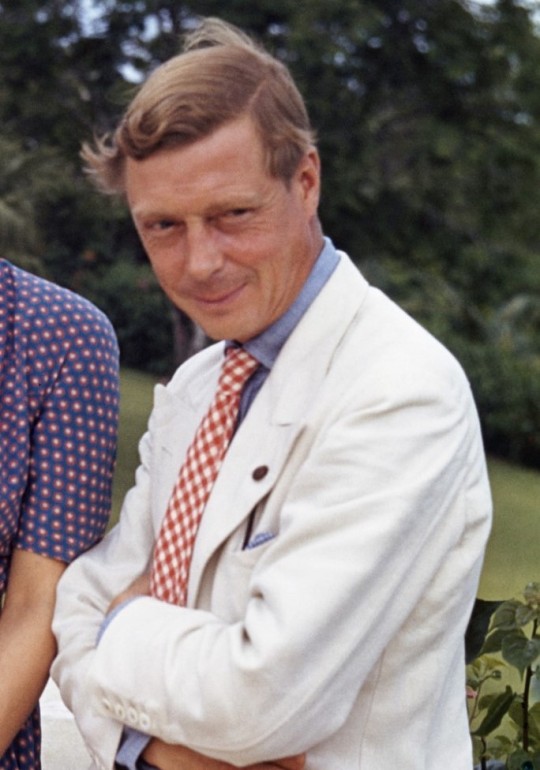



Royal Birthdays for today, June 23rd:
Ptolemy XV Philopator Philometor Caesar, Pharaoh of Egypt, 47 B.C.
Margaret of Denmark, Queen of Scotland, 1456
Charles II, Duke of Savoy, 1489
Shah Shuja, Mughal Prince, 1616
Marie Leszczyńska, Queen of France, 1703
Joséphine de Beauharnais, Empress of the French, 1763
Edward VIII, King of the United Kingdom, 1894
Tribhuhvan Bir Bikram Shah, King of Nepal, 1906
Maria Carolina of Bourbon-Parma, Marchioness of Sala, 1974
Maria-Carolina of Bourbon-Two Sicilies, Duchess of Palermo, 2003
#caesarion#marie leszczynska#josephine de beauharnais#margaret of denmark#Maria-Carolina of Bourbon-Two Sicilies#Maria Carolina of Bourbon-Parma#edward viii#shah shuja#charles ii#Tribhuhvan Bir Bikram Shah#royal birthdays#long live the queue
15 notes
·
View notes
Text
2023 Events to look forward to!
Births:
The second child of Prince Guillaume, The Hereditary Grand Duke of Luxembourg and Princess Stephanie, The Hereditary Grand Duchess of Luxembourg. The little one will join two year old Prince Charles.
The first child of Louis Ducruet & Marie Ducuret likely due late spring, the little one will join big brother, the couple’s dog, Pancake.
The third child of Charlotte Casiraghi-Rassam and second with Dimitri Rassam, likely due March ish, if I had to guess. The baby will join older paternal half sister 12 year old Darya Rassam, maternal half brother 9 year old Raphaël Elmaleh and 4 year old full sibling Balthazar.
PrincessEugenie, Mrs. Jack Brooksbank and Mr. Jack Brooksbank will eelcome baby#2 this summer.
Weddings:
Crown Prince Hussein of Jordan to Rajwa Al Saif in June 2023.
Princes Iman bint Abdullah II of Jordan to Jameel Alexander "Jimmy" Thermiótis
Countess Maximiliana von und zu Arco-Zinneberg to Byron Houdayer
Princess Märtha Louise of Norway and Durek Verrett
Princess Alexandra of Luxembourg and Nicolas Bagory in April 2023.
Infanta Maria Francisca of Portugal, Duchess of Coimbra & Duarte de Sousa Araújo Martins
Princess Theodora of Greece & Denmark to Matthew Kumar
Coronations & Jubilee Celebrations:
King Charles III of the United Kingdom on 4 June 2023
King Carl XVI Gustav of Sweden will celebrate his Golden Jubilee, celebrations will be held throughout 2023. but the major celebration will take place between Sweden’s nantional day in June and his actual accession day in September.
Also, Sweden will celebrate the 500th anniversary of the election of Gustav Vasa as King of Sweden
King Philippe of The Belgians will celebrate a decade on the throne in July
Royals Coming of Age:
Princess Maria-Chiara of Bourbon-Two Sicilies-1 January
Countess Luana van Oranje-Nassau-26 March
Prince Timotheus Friedrich of Prussia-9 June
Princess Alexia of The Netherlands-26 June
Princess Georgina of Liechtenstein -23 July
Duke Paul Marie of Oldenburg -8 September
Prince Emmanuel of Belgium-4 October
Prince Christian of Denmark-15 October
Leonor, The Princess of Asturias-31 October
Prince Sverre Magnus of Norway-3 December
Prince Nicholas of Belgium- 14 Decmeber
Prince Aymeric of Belgium-14 December
Royals Graduating High School
Princess Ingrid Alexandra of Norway- Elvebakken Upper Secondary School
Leonor, The Princess of Asturias-UWC Atlanic College, International Baccalaureate
Princess Alexia of The Netherlands -UWC Atlanic College, International Baccalaureate
3 notes
·
View notes
Text
SMU — meadows Free admission Thursdays after 5 p.m

Details “The Legacy of Vesuvius: Bourbon Discoveries on the Bay of Naples” continues through Jan. 5
Meadows Museum,
5900 Bishop Blvd., Dallas.
Free admission Thursdays after 5 p.m.
VISUAL ART Volcanic inspiration Meadows Museum explores the Spanish intersection with Italy’s awesome Vesuvius
Who doesn’t love a volcano? Not in the usual sense, given the fearsome destruction wreaked by its eruption. But from time immemorial, whether interpreted as divine retribution or merely release of geothermal pressures, volcanos have fascinated — and terrified — humans with their explosions of molten and solid rock, billowing clouds of black ash and poisonous gases, and flashes of lightning.
One of the most famous volcanos, Italy’s Vesuvius, is the inspiration for a stunningly displayed new exhibition at the Meadows Museum. It includes artifacts from Roman cities buried in Vesuvius’ legendary A.D. 79 eruption, but also — connecting to the Meadows’ focus on Spanish art — art and artifacts from the 18th-century Spanish occupation of Naples and Sicily.
Organized in partnership between the Meadows and the University of Texas at Dallas, “The Legacy of Vesuvius: Bourbon Discoveries on the Bay of Naples” was curated by Michael L. Thomas, director of UTD’s Edith O’Donnell Institute of Art History.
It includes major loans from Museo e Real Bosco di Capodimonte in Naples as well as that city’s Museo Archeologico Nazionale di Napoli, the Metropolitan Museum of Art in New York and the Wellcome Collection in London.
The A.D. 79 eruption, near the shin of Italy’s boot, achieved legendary status via eyewitness accounts by Pliny the Younger. (The Meadows exhibition includes artist Angelica Kauffman’s 18th-century imagining of the young Pliny’s experience.) Buried beneath lava and ash, the Roman cities of Pompeii, Herculaneum, Stabiae and other settlements were minimally disturbed until construction excavations in the 18th century.
Systematic exploration of the long-buried cities began after 1734, when an 18-year-old Spanish Bourbon prince wrested control of Naples and Sicily from Austrian occupation. Becoming Charles VII of Naples and Charles V of Sicily, the conqueror and Maria Amalia of Saxony, whom he married in 1738, had a particular interest in antiquities. Their support of the excavations continued under Charles’ son, who in 1759 became Ferdinand IV of Naples and Ferdinand III of Sicily.
The Meadows show includes Francesco Liani portraits of Charles and Amalia from around 1770, a decade after they had returned to Spain, he to rule there as Charles III. Ferdinand, only 8 years old when named monarch of Naples and Sicily, is shown looking quite mature in a 1759 portrait by Anton Raphael Mengs. (Until Ferdinand came of age, actual governance was put in charge of the prime minister, Bernardo Tanucci.)
Big Antonio Joli paintings at the Meadows display two different perspectives on Charles’ 1759 departure for Spain. With a hazy golden glow in the background, the Bay of Naples swarms with ships carrying the royal retinue and treasures. Emitting a slender stream of smoke, Vesuvius looms in the background of one view. The other view is backgrounded by the Capodimonte hill, with its crowning palace.
As statues, frescoes and pottery were recovered from the buried cities, they were displayed in new royal museums. Together with the Bourbons’ major building projects, the Roman treasures helped make Naples an important city and a prime attraction on the Grand Tours. They also sparked a vogue for classically inspired designs and images in new porcelain and furnishings as well as paintings and etchings. Among the Roman wall paintings displayed at the Meadows — most dramatically spotlighted against nearly black walls — the largest is an imaginative composition of trompe l’oeil columns and recesses. One of the panels portrays a mysterious shrine-like structure and a distant castle, with three stately figures off to the side and a scurrying man and dog. As Lynley McAlpine explains in the exhibition catalog, its costly Egyptian blue and cinnabar pigments would have flaunted the owner’s wealth.
Greco-Roman imagery is manifest in other wall paintings portraying Galatea and Polyphemus and, with diaphanous gowns flowing, dancing maenads. Statuary is represented by bronze reproductions of a young runner poised for a race and a bust of the philosopher Epicurus.
Although rich with historic and aesthetic background and photos, the catalog could have used an additional essay on wall paintings evoking worship of the Egyptian god Isis. Egypt had been a Roman province for nearly five decades before the A.D. 79 Vesuvius eruption, but it’s surprising to learn of a major Egyptian temple in Pompeii. In one scene worthy of the surrealists, a pedimented shrine shades a sarcophagus, possibly that of the god Osiris.
Eighteen centuries on, a tinted etching by Edouard Gautier-Dagoty and Jean Duplessis-Bertaux imagines that Isis temple and desperate worshippers as flaming lava is about to engulf everything.
Vesuvian drama hardly ended in A.D. 79. With dozens of eruptions in the centuries since and a particularly intense period of eruptions in the 18th and 19th centuries, the volcano became an international tourist attraction and a recurrent subject for paintings and etchings. Pierre-Jacques Volaire’s Eruption of Mount Vesuvius on the Ponte della Maddalena is a quintessentially romantic portrayal, the mountain spewing fire, rocks and ash as the moon and clouds seem to cower on the opposite side of the canvas. Fearful residents crowd the former bridge on the southeast of Naples.
As the 18th century progressed, both the volcano and the excavations were subjected to increasingly serious study and documentation. The British envoy Sir William Hamilton may have been only an amateur volcanologist, but his circa 1776 Campi Phlegraei: Observations on the Volcanos of the Two Sicilies , with hand-painted etchings by Pietro Fabris, includes illustrations ranging from close-ups of the quiescent Vesuvius cone and mixed igneous stones to the spreading devastation of the 1760-61 eruption. Plates from that book are included in the Meadows exhibition.
The exhibition also displays 18th-century porcelain and a sofa inspired by findings at Pompeii and Herculaneum. From the Real Fabbrica Ferdinandea of Naples comes a circa 1790 grouping of exquisitely detailed figures in biscuit (i.e., unglazed) porcelain so finely finished it could almost pass for marble. Winged cherubs cluster around a central figure of Isis, while priestesses present offerings. An elaborately gi
lded vase includes dancing maenads suggesting Pompeiian models. Airborne female dancers on the back of a neoclassical sofa are attributed to the Neapolitan painter Carlo Brunelli — not the present-day Italian artist of the same name — but they almost could pass for Thomas Gainsborough fantasies.
At the opening, informative wall labels were printed in such small type that you had to get up close and squint to read them. Larger print versions were said to be on the way.

0 notes
Note
Were they just honoring the exact same family members when they named Reichstadt and FJ or...Sophie gurl please.
JGJGHJSJK you know this idea actually crossed my mind, but basically yes, it just happened that the Habsburg's name pool was as big as their gene pool. But this actually is an interesting question, so let's take a super brief look at Habsburg naming!
As frustrating as it may be for us that everyone on this dynasty had the same three names, there was a logic behind it. Historian Barbara Stollberg-Rilinger in her fantastic biography of Empress Maria Theresia puts it best:
In the House of Habsburg, Christian names were always chosen from the same limited reservoir of saints, in ever varying order. The aim was not to stamp children as one-of-a-kind individuals but to mark dynastic identity and continuity.
While Stollber-Rilinger is specifically talking about the mid 18th century, some decades before the world turned upside down and many things changed forever, this naming convention kept being truth for the Habsburgs until the end of the dynasty. For example Franz Josef's son Rudolf was named after Rudolf I (1218-1291), the first king of the Romans from the House of Habsburg. The intention of marking Rudolf 's "dynastic identity and continuity" was clear. On top of that, it was also very usual to name a child after their godparent(s), who were often family members. It's not surprising, then, that most male members of the House of Habsburg in the 19th century were called a combination of Franz, Ferdinand, Karl, Josef, Ludwig, Otto or Leopold.
With that overview on Habsburg naming done, let's move on to the two cousins in question: Napoleon "Franz", Duke of Reichstadt and Franz Josef I.
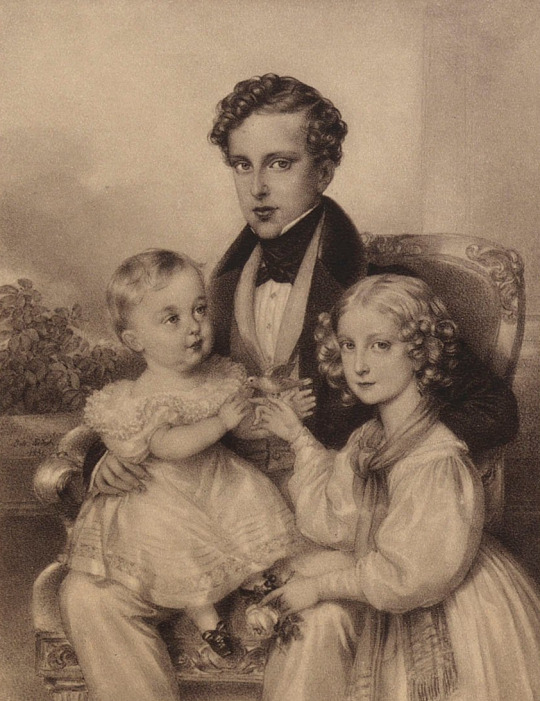
From left to right: Archduke Franz Josef, future Emperor of Austria; Napoleon II, Duke of Reichstadt; Princess Maria Carolina of Bourbon-Two Sicilies, future Duchess of Aumale.
As I said before, I don't know that much about Reichstadt other than the very basics, so I apologize beforehand if there is something wrong here, since I'm not in the loop of which are the best sources about him. In the same way, if there were any particular naming conventions in the House of Bonaparte, I'm not aware of them. That being said, let's look at the King of Rome's names!
Reichstadt's full name was Napoleon François Charles Joseph. Napoleon obviously after his father, a no brainer in my opinion: Little Napoleon's birth was basically a statement that the Bonaparte empire was here to stay. Then we have "François" whose German version would become in the name he would go by during his lifetime. This was after his godfather, his maternal grandfather Emperor Franz. "Charles" was in turn after his paternal grandfather Charles Bonaparte. Finally "Joseph" came from his second godfather, his uncle Joseph Bonaparte, King of Spain.
I find this naming very interesting, because Napoleon was creating a dynastic identity, rather than continuing it. And by throwing Emperor Franz's name in the mix, he joined the identity of his new dynasty with the Habsburgs.
Now let's look at FJ's name!
Sophie and Archduke Franz Karl's firstborn was named Franz Josef Karl. Were did these names came from was surprisingly harder to check than Reichstadt's names, because all the biographies in English that I checked on the Archive just straight up skip his baptism? I had to look for information about it in András Gerő's Hungarian biography of FJ using a machine translator. As I suspected, Emperor Franz was also the godfather of this grandson. In fact, old Franz full name was "Franz Josef Karl" so my guess is that all of FJ's names are after him.
At the time of his birth Franz Josef was several people behind the throne of Austria, yet given that there wasn't much hope in Crown Prince Ferdinand producing an heir, that he might one day succeed was not out of the realm of possibility; perhaps naming him exactly like his imperial grandfather was intentional. In any case, it followed the conventional naming rules of the House of Habsburg. By the way, the future Emperor of Austria was always just called "Franz" or "Franzi" amongst his family, he chose to ascend to the throne by the name of "Franz Josef" because he also wanted to be associated with Emperor Joseph II. Yet another example of Habsburg names marking "dynastic identity and continuity".
Now to finish the ask let's address the elephant in the room, the reason why are we looking at the names of these two cousins in particular instead of literally anyone else. Could Reichstadt had been, in fact, FJ's father?
Rumors about Reichstadt and Sophie being too friendly had in fact been going on even before Franz Josef was born. However, I think pretty much no one believes that him being the future emperor's father is possible. Let's look at what one of Reichstadt's biographers, Octave Aubry, has to say about this:
It has been asserted that Reichstadt was the father of Franz-Josef. The contention does not stand investigation. The friendship between the two lovers did not begin until after the birth of Sophie’s first child. As for her second, Maximilian, who was to be born in July, 1832, and to die in Mexico, such a filiation is not at all impossible. But in that direction everything is conjecture. If the two lovers themselves knew, they kept their secret. They loved each other: that is the only thing certain.
I've only read some fragments of this biography very superficially, but just by this you can tell that Aubry not only believes that an affair indeed happened, but also that he totally ships Reichstadt and Sophie lol. So if even him, who I believe is one of the main biographers to held the belief that they were more than close friends, doesn't buy into the rumors, then truly there isn't any evidence to back this up. About what I think about Max potentially being Reichstadt's son I already answer it in another ask.
Finally, I wanted to note that Reichstadt was very fond of his little cousin Franz Josef. He would often play with with him, and took him in his walks with Sophie. I found in Aubry's biography this very touching moment between them from when Reichstadt was already on the verge of death:
He asked to have little Franz-Josef brought to his room, for the lad’s charming ways delighted him. He stroked his hair repeatedly, and showed him little objects that he thought would amuse him and then finally held him in a tight embrace for a moment, dreaming. The child looked up at him, earnest, bored perhaps. His nurse came for him and his big cousin released him with a sigh.
I like to believe that Reichstadt was happy to share names with the cousin he loved so much.
#tl;dr: they were both named after emperor franz. i just ended up going down a ridiculously deep naming rabbit hole sorry#and now I legit feel like tearing up a bit dfgdfgk#also if you can't tell already my napoleonic subjects of interest are literally just napoleon's sons lol#napoleon ii duke of reichstadt#franz josef i of austria#franz i of austria#asks
35 notes
·
View notes
Photo




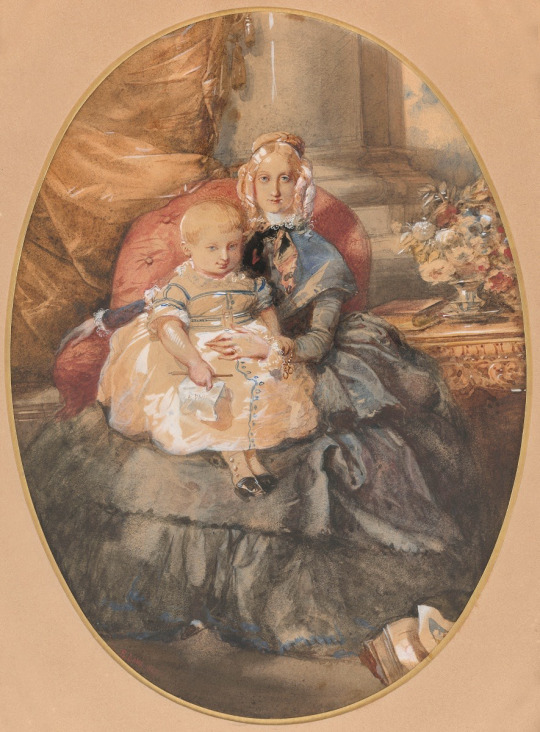
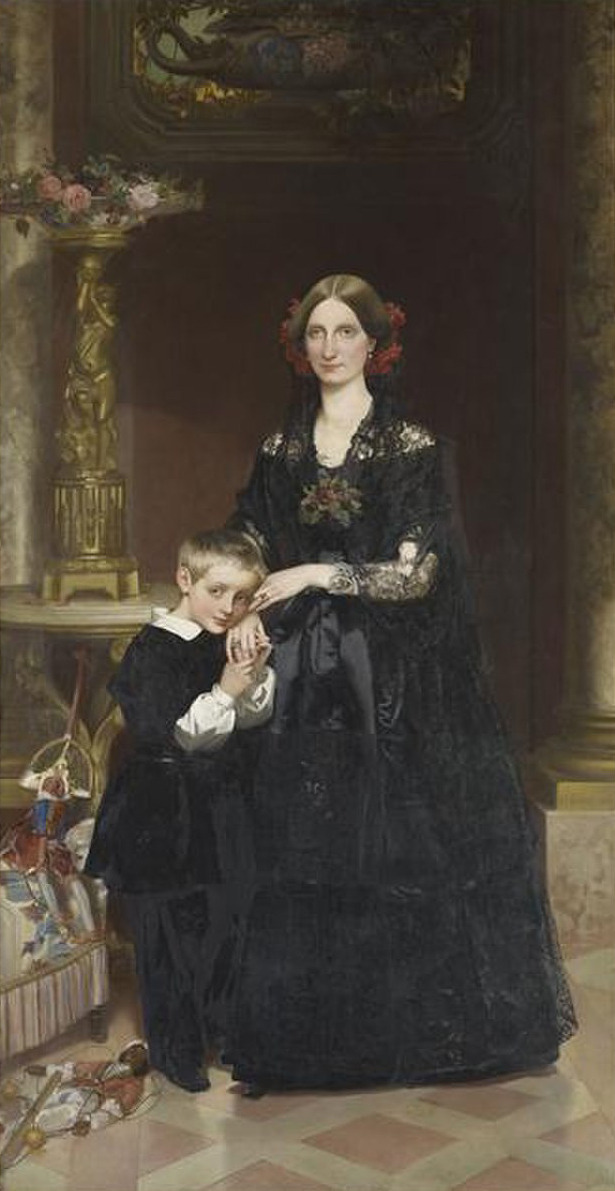




Marie Caroline Auguste de Bourbon-Siciles, duchesse d'Aumale —
Top row left: 1842 Marie Caroline Auguste de Bourbon-Siciles, later Duchesse d'Aumale by Josef Kreihuber (Musée Condé - Chantilly, Oise, Hauts-de-France, France) photo - Adrien Didierjean. From Reunion des musées nationaux; enlarged by half 810X985 @154 140kj.
Top row right: 1842 Princess Maria Carolina of Bourbon-Two Sicilies at the Age of 20 by Franz Schrotzberg (Musée Condé - Chantilly, Oise, Hauts-de-France, France). From pinterest.com/bjornolofkihlbe/art-austrian-artists/franz-schrotzberg/ 980X1069 @72 144kj.
Second row left: 1845 Maria Carolina of Bourbon-Siciles by François Meuret (Musée Condé - Chantilly, Oise, Hauts-de-France, France). From Wikimedia; doubled size 806X994 @96 139kj.
Second row right: 1846 Marie-Caroline-Auguste de Bourbon-Siciles, princesse de Salerne Duchesse d'Aumale by Meuret (Musée Condé - Chantilly, Oise, Hauts-de-France, France). I got this before I recorded sources; posted to another site in April 2010.
Single images from top to bottom -
Maria Carolina, Duchess of Aumale, née Princess of Bourbon-Two Sicilies, with her eldest son, Louis, Prince of Condé by ? (location ?). From tumblr.com/blog/view/bespridannitsa 855X1200 @72 515kj.
1851 Marie Caroline Auguste de Bourbon-Siciles by Victor Mottez (Musée Condé - Chantilly, Oise, Hauts-de-France, France). From Google search 615X1191 @72 171kj.
ca. 1854-1855 Miniature of the duchesse with the prince de Condé and with the duc de Guise on her lap, by Sir William Ross (location ?) From godsandfoolishgrandeur.blogspot.com/ 750X980 @300 1.4Mp.
1865 Duchesse d'Aumale by Adolphe Beau (Musée Condé - Chantilly, Oise, Hauts-de-France, France). I did not record sources when I found this; posted to another site in April 2010.
1865 Marie Caroline, duchesse d'Aumale by Mayer Brothers. From eBay. pots and flaws were removed from all parts of the image. A small part of the ground she stands on was teased out from the spots and extended all around the hem of her skirt 940X1421 @1 510kj.
1866 Marie Caroline Auguste de Bourbon-Siciles by Charles Jalabert (Musée Condé - Chantilly, Oise, Hauts-de-France, France). From Wikimedia; removed more conspicuous spots & flaws with Photoshop & cropped right margin 1498X2359 @762 1.4Mj.
#Romantic era fashion#early Victorian fashion#1840s fashion#Marie Caroline Auguste de Bourbon-Siciles#duchesse d'Aumale#1842 fashion#Josef Kreihuber#straight hair#chignon#bertha#bow#quarter-length close sleeves#puffed cuffs#V waistline#full skirt#Franz Schrotzberg#hair flowers#modesty piece#scoop neckline#off shoulder neckline#pleated bertha#V neckline#floral bodice ornament#ruching#wrap#sheer wrap#1845 fashion#François Meuret#side braid coiffure#sheer cuffs
21 notes
·
View notes
Text

OTMAA Contemporaries: Marie Louise of Orleans
Born in 1896, Marie Louise was of a similar age to Olga and Tatiana, who were her distant cousins through the Saxe-Coburg line; OTMAA were great-grandchildren of Queen Victoria, and Marie-Louise was the great-granddaughter of Queen Victoria's favorite uncle, Leopold I of Belgium.
Marie Louise's mother was Princess Henriette of Belgium, and her father was Prince Emmanuel of Orleans, Duke de Vendome. She had three younger siblings, Sophie (1898), Genevieve (1901), and Charles Philippe (1905).
She married Prince Philip of Bourbon-Two Sicilies in 1916 and had one son before divorcing in 1925. She remarried in 1928, to Walter F. Kingsland Jr., an American businessman.
18 notes
·
View notes
Text

Maria Theresa, Dowager Queen of the Two Sicilies, 1865.
She was was the second wife of Ferdinand II of the Two Sicilies. She was the eldest daughter of Archduke Charles, Duke of Teschen and Princess Henrietta of Nassau-Weilburg.
Among her many grandchildren were Archduke Franz Ferdinand of Austria, Princess Consort Marie Louise of Bulgaria, Prince Ferdinand Pio, Duke of Calabria and Prince Carlos of Bourbon-Two Sicilies.
#dowager queen maria theresa of the two sicilies#bourbon-two sicilies#italian royal#italian royalty#habsburg#1860s#1865
11 notes
·
View notes
Note
The birth of the Comte de Chambord seems to have been even more providential and convenient for the political regime than that of James Francis Edward Stuart. Was there any talk of fake babies or at least the murdered Duc de Berry not being the father?
Oh yes. For some background, the birth of the Comte de Chambord - or, as he was known at the time of his birth, the duc de Bordeaux - came as the Bourbon dynasty was contemplating extinction. The throne was occupied by the 65-year-old King Louis XVIII, next youngest brother of the executed King Louis XVI; his bride had died in 1810, and the couple had had no children. The heir presumptive was the king’s youngest brother, Charles, Comte d’Artois; his wife had died in 1805, but he had fathered two sons, Louis, duc d’Angoulême, and Charles, duc de Berry. In 1799, Angoulême had married his first cousin, Marie Thérèse, the only child of Louis XVI and Marie Antoinette to have survived the Revolution; unfortunately, the couple had no children. The only remaining legitimate male-line male of Louis XV’s line was the duc de Berry. In 1816, Berry married Marie Caroline, granddaughter of the King of the Two Sicilies, but of their first three children, only Princess Louise survived infancy; still worse, Berry was assassinated in 1820.
So when Berry, as he was dying, announced that his wife was pregnant again, there was significant hope that this child would be the continuation of the Bourbon line (and would keep the throne out of the hands of the Orléans branch, descendants of Louis XIV’s younger brother). The king appointed the ducs de Coigny and d’Albuféra to act as the official witnesses at the delivery, but they never actually did so. Around midnight on September 29, 1820, the duchesse de Berry went into labor; by 2:30 AM that morning, her son, the new duc de Bordeaux, was born. Since the baby had been born so quickly, Marie Thérèse ordered that a few of the sentries on duty at the palace be summoned, who verified that the child was that of the duchesse (the duchesse de Berry had actually insisted that the umbilical cord not be cut until this verification happened). The baby was named Henri (after the first King of France of the Bourbon line, Henri IV), and was given as one of his additional names “Dieudonné” - literally, “Godgiven”, the same name that had been given to Louis XIV, the first child to be born to his parents after 23 years of marriage.
The one royal not pleased with the birth of young Henri was the duc d’Orléans, whose chances for succession had taken a sharp decline. Not long after the prince’s birth, the “Protestation de S. A. S. le duc d'Orléans” was published in London newspapers; purportedly (and probably, although he himself publicly denied it) authored by the duc d’Orléans, the publication stated that Henri was not, in fact, the child of the duc and duchesse de Berry. The essential argument of the piece was that the birth appeared to be “a fraud so audacious, and so contrary to the principles of hereditary and legitimate monarchy”, since there were no official witnesses or members of the royal family present when the birth had taken place. As a counter to those who had seen the baby still connected by the umbilical cord to his mother, the piece suggested that the baby had merely been placed on the bed, with a cord run under a blanket to disguise the fact that it was not actually connected to the duchesse. To emphasize the point, the author drew a number of comparisons between the Stuarts and the Bourbons: the piece mentioned the “feigned pregnancy” of Mary of Modena and repeated the old washbasin story, and noted “the duc de Bordeaux, recognized bastard” as the parallel to “the son of James II, recognized bastard”.
If the duc d’Orléans had hoped to cast doubts on the infant duc de Bordeaux’s legitimacy, however, he did not succeed. When the duke questioned the duc d’Albuféra as to whether the duchesse was really the mother of the duc de Bordeaux, Albuféra replied “As much as you are the father of the duc de Chartres” (the eldest son of the duc d’Orléans). The illegitimacy story never really took on after that (and with the duc de Bordeaux dying childless in 1883, the question of his own legitimacy became something of a moot point).
20 notes
·
View notes
Text
Syttende Mai: Swedish-Norwegian War of 1814. Norwegian nationalism and the establishment of Sweden’s current royal house.
Europe in 1814-1815 is a flurry political activity. The War of the Sixth Coalition has supposedly finally defeated Napoleonic France in the spring of 1814. That autumn in Vienna, Austria the major anti-French powers, Britain, Austria, Prussia and Russia and the anti-republican/anti-Bonapartist restored Bourbon dynasty of France are attempting to dictate terms for the outlook of Europe’s map. The conservativism of the monarchs from each of these countries sees republicanism and national revolution as the very tenets of ideology that had undid Europe’s delicate balance of power since the French Revolution of 1789. Austrian Foreign Minister and later Chancellor Klemens Von Metternich is the “maestro” for the so called Concert for Europe or Congress of Vienna is leading the charge, hoping to create system whereby the great powers of Europe will consult each other in an early form of shuttle diplomacy to suppress massive changes to Europe’s map. For the immediate several decades of the 19th century following Napoleon’s defeat this so called “Metternich System” to varying degrees will work in suppressing nationalist and revolutionary sentiment. Increasingly this will be difficult to maintain as romantic nationalism and republicanism have been planted as seeds in the collective psyche of Europe’s many peoples. The Congress of Vienna includes the Big Five (Britain, Austria, Prussia, Russia & Bourbon France) but it also includes Spain, Portugal, Netherlands, various smaller German and Italian states and the Scandinavian powers of Denmark and Sweden. These latter two nations would have their own roles in the Napoleonic Age and in 1814 romantic nationalism within the third Scandinavian nation, Norway, would give birth briefly to a new nation caught in the dynastic struggles between Denmark and Sweden.
Over the course of Scandinavian history the modern nations of Norway, Denmark and Sweden went through many changes from small petty kingdoms born out of the Viking Age to more unified but separate countries and then countries united under the singular banner of the Kalmar Union (1397-1523). By the 18th and 19th centuries though they were divided between the Kingdom of Denmark-Norway in personal union and the Kingdom of Sweden. All these nations were populated by related Germanic peoples who spoke related languages and had common histories, mythologies and cultures all shared the same official religion of Lutheranism. They were also separated by their own local customs as well and differences in their related languages and somewhat due to historical memory of their overlapping but separate pasts. Geopolitical struggle also wrapped up Scandinavia. In the 17th century Sweden arose to become a great power in Europe, forging the Swedish Empire which ruled Sweden, Finland, parts of Baltic countries, Poland, Russia and Germany. Meanwhile Denmark-Norway had the role of second-tier or middling power in European politics. Denmark-Norway was in personal union with a single king but Denmark was very much the dominant power in the union with Copenhagen dictating it’s northern partner’s fate. Sweden remained its rival and Norway was their battleground more often than not.
During the 18th century, Sweden’s off and on wars with Poland-Lithuania, Russia, Denmark-Norway and other powers weakened its status. By the Napoleonic era, Sweden like Denmark-Norway was a shadow of its former self. Nevertheless it still retained a strong enough influence to help tip the balance in favor of the French Empire or its opponents. Sweden’s ruling family, the Holstein-Gottorp dynasty from Germany had at its head Gustav IV Adolf. Gustav IV was opposed to French republicanism and to Napoleon and sought an alliance with his country’s traditional enemy, Russia. Against advice from his inner council, Gustav joined the War of the Third Coalition against France in support of Britain, Russia, Austria, Naples & Sicily. During this war, Sweden was a non-entity. France won the war with the victory of Austria and Russia at Austerlitz. During the Prussian lead War of the Fourth Coalition in 1806 Sweden saw its possessions in modern Germany and Poland, known as Swedish Pomerania lost to the French advance which had wiped out the Prussians in under a month and bloodied the Russians as well. During this time, Napoleon’s troops and the nationalist spirit they invoked revived a partial Polish state, the Duchy of Warsaw. The Duchy was seen by Polish nationalists as a first step towards reviving the conquered Polish-Lithuanian Commonwealth which had been partitioned in the 18th century by Prussia, Russia and Austria. The French saw it more or less as a client state and vehicle from which it could support its own army in ventures elsewhere in Europe. The defeat of Russia in 1807 and the Treaty of Tilsit now forced Russia to join Napoleon’s economic blockade of his most steadfast enemy, Britain. It also put Russia at odds with Sweden which remained a British ally.
1808 saw the Finnish War between Sweden and Russia, the Russians overwhelmed Swedish garrisons in Finland proper and then in a daring infantry crossing of the ice frozen waters of the Gulf of Bothnia arrived on the eastern Swedish shores where Sweden was forced to surrender. Finland was lost to the Russians ever after, becoming the new Grand Principality/Duchy of Finland with the Tsar as Grand Duke. Sweden’s fall from the heights of power was never more evident. 1809 Gustav IV was arrested and overthrown in a coup and replaced by his uncle and former regent, who was crowned Charles XIII. Charles XIII was old, suffered from heart attacks and had no suitable heir. His role in governance was minimal and more ceremonial for the presentation of stability. The Swedish parliament, the Riksdag needed to find a new heir. It found it initially in a Danish prince, who Charles XIII adopted as he was named Charles August, however the prince died from a stroke while riding a horse, he was only 41, so the search renewed. The ultimate choice was from an unlikely source, Napoleonic France.
Jean Bernadotte was a Frenchman who came from the middle class once hoping to become an attorney. He had no noble connections but eventually made his way into the army and under the French Revolution where men could be promoted on merit and not have to rely on aristocratic connection Bernadotte became an officer. He fought in numerous campaigns in Germany and Italy in particular and earned praise for valor and inspiring his men. By the time Napoleon came to power in France, Bernadotte eventually became one of eighteen of his Marshals of the Empire, a new form of aristocracy based on Napoleon’s need to control the military and to honor his subordinate men of distinction. Bernadotte was also made Prince of Ponte Corvo for his service in the Battle of Austerlitz. However, he also began to fell afoul of his Emperor’s favor gradually. During the 1806 campaign against Prussia while leading his own French Corps, Bernadotte was ordered to support Marshal Davout’s Corps but due to poor roads failed to commit troops to battle. Though his troops nearby presence aided in forcing the Prussians to retreat. Napoleon believed his disobeyed orders and nearly court-martialed Bernadotte. Though no such action was taken and Bernadotte was kept in the campaign. His corps eventually captured the German city of Lubeck which had Prussian, Swedish and Dano-Norwegian soldiers in it. Swedish prisoners were well treated by Bernadotte and returned to Sweden regaling their fair treatment by Bernadotte. Following the Treaty of Tilsit which made peace with Russia and Prussia and made them into reluctant but nominal French allies Bernadotte was made a regional governor in north Germany where he proved an adept administrator. He was tasked with invading Sweden but lack of troop transport ships and the new Spanish campaign in which France turned on its former ally Spain lead to new focus elsewhere. Meanwhile Denmark-Norway became a new ally of the French in 1808 and this lead to a limited war between Britain and Denmark. Bernadotte served as leader of French troops in Denmark. He well treated and respected the Danes, earning good favor with more Scandinavians. During Napoleon’s campaign against Spain he wanted to install a new king on the throne one with Bonapartist connections. Bernadotte was a first choice but he rejected the offer. Napoleon instead went with his own brother Joseph Bonaparte. Joseph was friends with Bernadotte and in fact his brother in law. Since both were married to the Clary sisters with Joseph married to Julie Clary and Bernadotte to Desiree Clary, one time fiancée of Napoleon himself.
Bernadotte continued to serve with the French in the War of the Fifth Coalition against a renewed Austrian Empire and fought in command of a subordinate German (Saxon) corps. that was virtually obliterated at the Battle of Wagram. Napoleon got the victory but relieved Bernadotte of his command and sent him back to France for administrative duties first in Belgium then back to Paris. During his role in preparing an army in Belgium (Army of Antwerp) Bernadotte made criticisms of Napoleon which found their way back to the Emperor. He was to be sent to Spain, he disobeyed the order and was sent to face Napoleon himself was instead given a new role as governor of the Papal States in French occupied Rome, Italy. Unexpectedly the invitation to become heir to the Swedish throne was presented to Bernadotte, in part due to the humane treatment he had shown Swedish prisoners of war years earlier and in part due to his overall diplomatic and administrative prowess. By this time, 1810, Sweden had come to peace terms with France.
Bernadotte had longed to advance to a position of full on royalty and his occasional differences with Napoleon had essentially left him to fulfill an endless cycle of administrative duties that while important were not satisfying to his own desires. Not only was his humane treatment of Swedish troops in the past a consideration, but the Swedes thought a Napoleonic insider might make relations with France more diplomatic in the future as well as give insight into Napoleon’s character whether in opposition or as an ally. Napoleon was sought for advice by the Swedes and initially put forth his own stepson (Eugene de Beauharnais) who served as Viceroy of the Napoleonic Kingdom of Italy as a candidate but his stepson refused to convert to Lutheranism which was required by the Swedish Riksdag as part of the deal. Napoleon also could not convince any of his brothers who already occupied thrones nor were his nephews old enough, so Bernadotte was accepted by Napoleon to be emancipated from service to France. Initially, he made Bernadotte take an oath never to take up arms against France but Bernadotte refused stating he couldn’t determine the path Sweden might take, Napoleon eventually relented unconditionally. It was later to be a strategic error on his part.
Bernadotte arrived in Stockholm, Sweden on November 5th, 1810. He was adopted by King Charles XIII as a son made heir to the throne officially. He also converted from Roman Catholicism to Lutheranism as required. He was well received by the Swedes who popularly believed he would gain some territory for them, namely Finland. With Charles XIII infirm, Bernadotte, rechristened Charles John or Karl Johan, set about governing the country, namely its foreign policy. He was pressured to retake Finland but he realized due to Sweden’s finances, need for military reform, logistical difficulties with Russian troop strength and the Finns lack of desire for reunion with Sweden, the war wouldn’t end in their favor. Furthermore, France was pressuring Sweden to comply with the Continental System and declare war on Britain, lest it face a three way invasion from France, Russia and Denmark. The new Crown Prince Charles John agreed to this, leading to a low level war with Britain which realized it was Napoleonic pressure which lead to Sweden’s nominal declaration of war. Little activity resulted from this and Sweden and Britain’s “war” was virtually in name only which satisfied Napoleon. Both nations steered clear of conflict foreseeing economic disaster and realizing each other’s potential as allies against France at a later date. This opportunity came when Napoleon launched an invasion of Russia in 1812 due to its lack of compliance with the Continental System. Napoleon was lead further and further into Russia facing a few large battles that were tactical victories but not the decisive one he needed. He captured Moscow that was left in burning ruins by the retreating Russians and eventually news of a coup in Paris forced him to abandon his troops to a long drawn out retreat back to friendly territory in Poland. The French and allied army was drained by desertion, disease, battle, starvation, Russian attrition and most famously the Russian winter. By 1813 the failed invasion forced Napoleon to raise new armies back in France and Germany while he once conquered foes Prussia and Austria rejoined a resurgent and advancing Russia. Meanwhile, the British Royal Navy commanded the seas and contributed ground troops to the years long Peninsular War joining Portugal and Spanish guerillas in pushing back the French occupiers and their Spanish Bonapartist collaborators to French border. With France on the retreat, Sweden sensed it was their time to join in an make a difference. The final tipping point for Sweden was the French refusal to accept transferring Norway from their Danish ally to Sweden to compensate for the loss of Finland. Charles John joined the War of the Sixth Coalition now commanding Swedish forces numbering almost 20,000 in the so called Army of the North which reinforced by 30,000 Prussians and a British regiment converged with the main Prussian, Russian and Austrian armies near Leipzig, Germany where the French supported by Polish, Italian and German allies were defeated in the so called Battle of the Nations which lasted for three days in October 1813. Part way through the battle, German vassals of Napoleon from the client Kingdoms of Saxony and Wurttemberg switched sides and joined the Coalition against France. Napoleon was defeated and in a fighting retreat against the advancing Allies. The other powers were fine with Denmark losing Norway to Sweden as compensation and the Swedes quickly turned their attention away from France instead fighting the Danes and beating them in December at the Battle of Bornhoved, the last time in history to the present day that Denmark and Sweden in their long historical rivalry would fight each other.
Following this campaign in January 1814, Britain and Sweden forced Denmark to sign the Treaty of Kiel. It gave the British some small islands off the Danish coast as compensation and the whole of the Kingdom of Norway proper to Sweden. In exchange Sweden gave Denmark, Swedish Pomerania in Northern Germany/Poland. Excluded from this exchange was the Norwegian dependencies of the Faroe Islands, Iceland and Greenland which all remained with the Danish crown. Denmark in turn also joined the anti-French coalition but little came of this since Napoleon abdicated and went into exile on Elba in April 1814 (only to return in 1815 and reign during the 100 Days until the Battle of Waterloo finally defeated him).
Norwegians had no say in the Dano-Swedish negotiations and spurred by feelings of romantic nationalism for their own nationhood with distant memories of a time with Norway was a dominant Scandinavian power free of Danish or Swedish rule. Accordingly events in Scandinavia shifted from France now turned to regional conflict. Norway refused Swedish authority and accepted that Denmark had given up on them, they declared independence and passed a liberal constitution calling for a constitutional monarchy. It was signed by the Norwegian Assembly on May 17, 1814 (Syttende Mai) and they named Danish Crown Prince Christian Frederick its own independent king, separate from Demark. He accepted and quickly showed up in Norway to take control of events. Sweden wouldn’t stand for Norwegian independence and Denmark refused to get involved after the Napoleonic Wars. Determined to make the most of what was promised to them, Sweden under Charles John’s military leadership engaged in the brief Swedish-Norwegian War in the summer of 1814.
Sweden planned a pincer movement across the border to trap Norwegian troops and to take the capital, Christiania (Oslo) . Norway got 30,000 volunteers to make up their army while the Swedes could muster 45,000 troops. The Swedes were experienced and well equipped and with Charles John, a former Napoleonic French general as their leader had sound leadership when compared to their Norwegian enemy. However, the Norwegians did have artillery and great deal of pride and what followed was a three campaign that saw the Norwegians in a fighting retreat. The Norwegians, to the Swedes surprise, put up a more spirited fight than expected. Winning tactical victories in the Battles of Lier and Langes but both only delayed the inevitable as the Norwegian command was hampered by indecisiveness in overall strategy and the Swedes continued to outflank them. Eventually with crucial Norwegian fortresses outgunned and outnumbered, they surrendered and fell back. On August 14, 1814, Norwegian representatives separate from their elected king, Christian Frederick signed the Convention of Moss which agreed to a ceasefire/surrender of Norwegian forces but given the Norwegians early victories and Swedes desire to end things quickly and not hamper long term relations agreed to a more equitable arrangement. Moss decided the following points, Sweden and Norway would agree to a personal union with the Swedish monarch as king of both countries. However, Sweden and Norway would have separate parliaments, the Riksdag in Sweden and the Storting in Norway. Christian Frederick would return to Denmark and abandon all claims to Norway which as a constitutional monarch he accepted the will of his people. Finally, Norway would be allowed to maintain its own separate constitution as was created in May 1814 with minor amendments to accommodate the new union. Charles John, being future king accepted these terms as did the Swedes and the Norwegian Storting.
In the aftermath, the Union of Sweden-Norway was born in 1814 with Charles XIII as its first king, reigning until his death in 1818. Charles John finally took over as King of Sweden & Norway as Charles XIV John. His descendants, the House of Bernadotte rule Sweden as a constitutional monarchy to this day. The Swedish-Norwegian war also notable as the last war between these two nations and the very last war Sweden has fought to the present time, having maintained neutrality in all wars since that time. Sweden-Norway out of the Convention of Moss allowed Norway to not be a conquest but received as a fully equal entity with its own internal parliament and separate constitution while sharing the same monarch, this dynamic was in some ways a precursor to the later dual monarchy model followed by the Austrian Empire when in became the Austro-Hungarian Empire in 1867.
At times over the next century, the Union would see periods of cooperation, pan-Scandinavian sentiment, including proposed union with Denmark and varying degrees of estrangement. Issues for Sweden-Norway centered around having a common foreign policy dictated from Stockholm which began to fuel recurring resentment among the Norwegians since they couldn’t debate foreign policy themselves and only their Prime Minister could represent their interests while the Swedish Riksdag directed policy. Furthermore, Swedish cultural attitudes tended to view Norway and Norwegians as junior partners in the Union and very much still a subjugated people only added to resentment from Norway. Emigration from both countries but particularly Norway to the United States during the 19th century was commonplace, so much so that Norwegian-American and Swedish-American communities grew to have distinct ethnic enclaves and cultural impacts in the US, mostly centered in the Upper Midwestern states and even on cuisine and the regional American English dialects spoken. In the present day more Norwegian-Americans exist than do Norwegians in Norway. Finally, the continued cultural resentment and practical differences in two separate parliaments and disagreement over foreign policy lead to a renewed desire for separation and dissolution to the Union. Their were attempts to accommodate a separate foreign policy for Norway but Sweden and Norway couldn’t agree on its terms and Sweden threated military intervention anytime Norway brought up independence. Sweden’s parliament began to double down in the early 20th century on Sweden taking more precedence over Norway, increasing tension and fracturing the Union. Finally, in 1905 with impasse being unavoidable Norway’s Storting tried one last attempt to get then King Oscar II to approve a separate foreign service, he exercised his veto and declined. The ministers of Norway tendered their resignation, which he refused to accept since no replacements to form a new government could be found. The ministers turned their government’s fate to the Storting’s hands, unilaterally they declared Oscar II had ceased to be Norway’s king and declared an end to the union with Sweden. Sweden declared this a Norwegian revolt. Sweden’s Riksdag did however agree to consider negotiation for the dissolution if the Norwegian people passed it in a plebiscite. The Storting anticipated this move announced their own plebiscite on August 13th prior to the Swedish demand being made. The plebiscite was not phrased in such a way to ask yes or no in favor but rather did the Norwegian people recognize the union as de-facto dissolved already, 99% of the voters agreed it had. There was a unlikely prospect of war, but both sides had considered it, Norway had asked for a several million dollar loan from France in the event of such a conflict. Following the vote, Norway asked Sweden’s Riksdag to cooperate, both sides agreed to hold talks. That September Swedish troops on the border were placed and in response Norwegian army and naval troops were put on standby. Nevertheless and agreement was reached on September 23rd, 1905. The union would dissolve but a neutral zone to be arbitrated by the international court in the Hague would decide its outcome, also Norway must dismantle its fortifications seen as an act of potential aggression against Sweden. Oscar II then renounced all claims to the Norwegian throne for himself and his descendants. The Storting made one last offer for a descendant of his take the throne separately but Oscar declined seeing it as pointless. The Storting then offered the throne of Norway to yet another Danish prince, as it had 91 years prior, this time Carl of Denmark who accepted and became King of Norway Haakon VII, the first unanimously recognized monarch of an independent Norway since 1387. His descendants in the House of Glucksburg reign as monarchs of Norway to this day with his grandson Harald V as the current king. The 17th of May or Syttende Mai is celebrated in Norway as Constitution Day to this day and in Norwegian- American communities is the most visible public celebration of Norway and Norwegian culture.
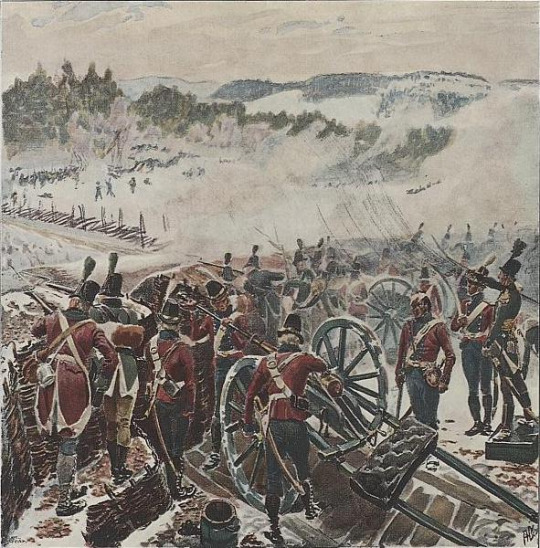
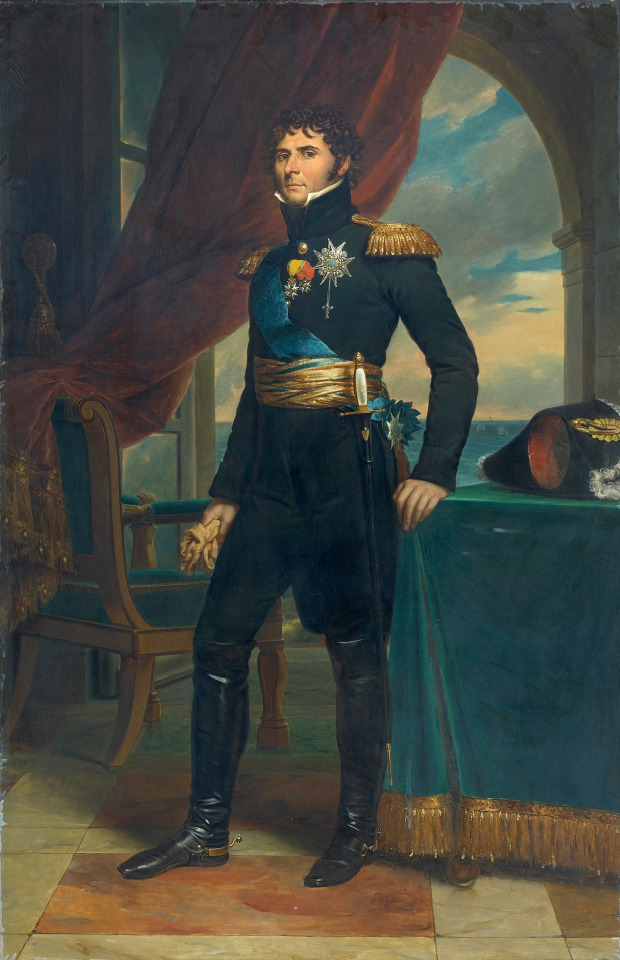
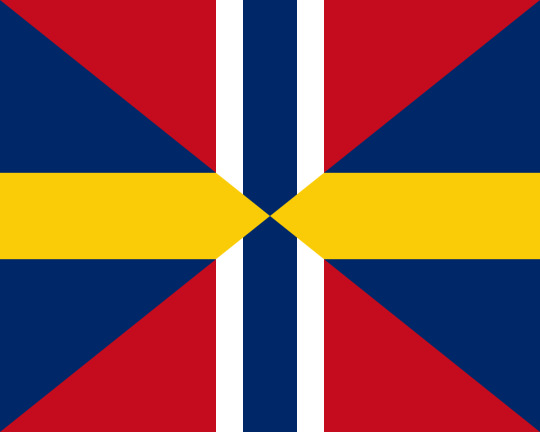
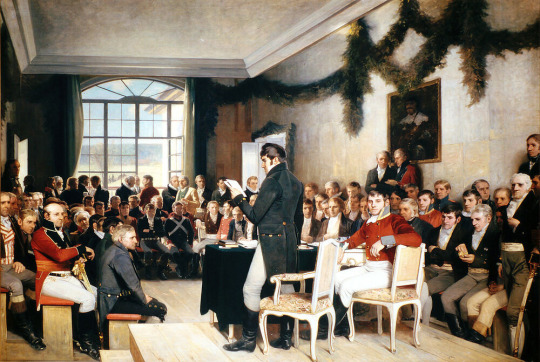
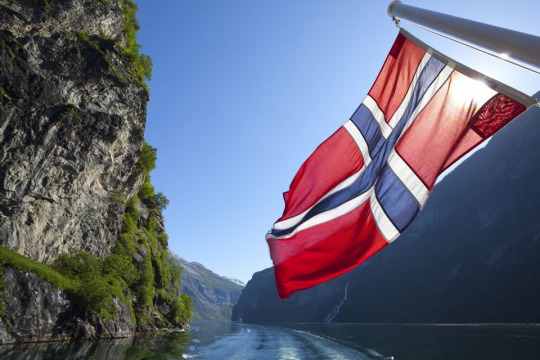
#norway#sweden#denmark#sweden-norway#swedish norwegian war#norwegian independence#syttende mai#napoleonic wars#19th century#nationalism
4 notes
·
View notes
Photo

@https://timeewaitsfornone.tumblr.com/
Prince Ferdinand, Duke of Alençon
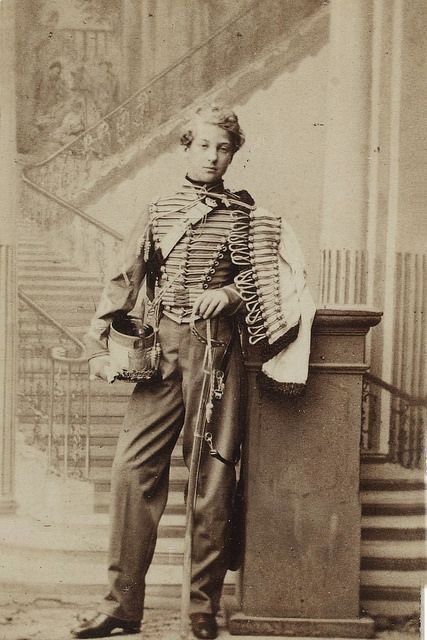
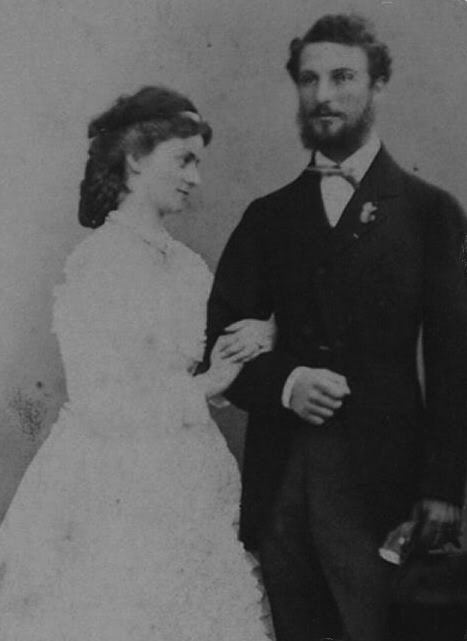
He married Sophie Charlotte Augustine, Duchess in Bavaria the sister of Empress Elisabeth(Sissi)of Austria.
The Duke and Duchess of Alençon had two children:
Louise d'Orléans (1869-1952) who married Prince Alphonse of Bavaria (1862-1933), infant of Spain. Emmanuel d'Orléans (1872-1931) "Duke of Vendôme" who, after an affair with Miss Louise de Maillé and the birth of a natural child, married Princess Henriette of Belgium (1870-1948), sister of King Albert I of Belgium.
The Duke d'Alençon's childhood is particularly austere. His father, Louis of Orleans, Duke of Nemours shows little tenderness to his children and roughs them, thinking thus to harden them. Despite everything, the Duke of Alençon remains very close to his father and he enjoys a great influence on him all his life. His mother, the Duchess Victoire, died in childbirth in 1857, when he was only 13 years old. Her grandmother, Queen Marie-Amélie cares with great tenderness for the education of her "little sonnet" and her brothers and sisters.
In 1861, after two years of public school in Edinburgh, "Alençon" studied the profession of arms at the military school of Segovia and, being forbidden to stay in France like all members of his family, he commits himself as a an officer in the Spanish army (of which his uncle, the Duke of Montpensier, is a part).
In 1866 Ferdinand and his cousin Louis of Orleans, Prince of Conde, embarked at Southampton on the Mongolia, a ship of the British shipowner P & O bound for Egypt. They land at Alexandria where Ferdinand let his cousin continue his journey, to visit the country. In the meantime, his grandmother died in England in 1866 at the age of 84.
Faithful to her sovereign, Isabel II of Spain, the prince participates in an expeditionary force tasked with suppressing an insurrection in the Philippines. His bravery earned him the rank of captain but he resigned when the queen was deposed in 1868.
When the Franco-Prussian war broke out in 1870, the Duke of Alençon informed the government of Napoleon III that he was eager to participate in the fighting, even as a second-class soldier. But the French army rejects the prince's request (like those of all his Orleans relatives), as ordered by the government of Napoleon III.
In 1868, the prince married Duchess Sophie-Charlotte de Wittelsbach, sister of the Empress of Austria and the former Queen of the Two Sicilies. The young couple Alençon lives happily, in Sicily then in Rome, at the King of the Two Sicilies, to cure the health of the Duchess, greatly weakened by a first childbirth. Falsely suspected of preparing with the two ex-sovereigns for the re-establishment of the Bourbons on the throne of the Two Sicilies, the "Duke and Duchess of Alençon", so as not to cause embarrassment to their parents, leave Italy and Italy. settled in Meran and Mentelberg, in the Austrian Tyrol (currently in Italy). The duchess gives birth to her second and last child, Emmanuel, while the duke is in Paris with his father preparing for the arrival of his family in his homeland.
Returning to France after the fall of the Second Empire, Ferdinand d'Orléans can finally become an officer in the army of this country he venerates without knowing him really since he left at the age of 4 years. The couple moved to Vincennes with his two children. Appreciated by his soldiers but abused by some of his superiors because of his royal birth, Ferdinand of Orleans is however again removed from military life by the 1886 law of exile, which excludes the Orleans and Bonaparte from France. and condemns the pretenders to the French throne to a new exile. Ferdinand however chooses not to accompany his cousin, the Count of Paris, in exile and remains live in the French capital by patriotism.
Like his wife, who became a Dominican Tertiary in 1876, the Duke of Alençon became a member of the Franciscan Third Order and devoted much of his time to good works. After the tragic death in 1886 of her first betrothed, Ludwig II of Bavaria, the Duchess of Alençon compulsively takes refuge in an adulterous love story. Ferdinand then had her cared for in a clinic near her family in Austria, under the benevolent care of her brother-in-law, Duke Charles Theodore in Bavaria, a soldier who became a doctor and then a well-known ophthalmologist. In 1891, his daughter Louise married a German cousin, Prince Alphonse of Bavaria. Five years later, the Duc de Vendôme married Princess Henriette of Belgium. If the "Bavaria" must wait many years before having their first child, very quickly the "Vendome" make Ferdinand grandfather. In 1897, the Duchess of Alençon perished in the fire of the Bazaar of Charity. The duke, broken and now in his fifties, tries to take the habit. This desire is not granted however, despite an appeal to Pope Pius X. Deceiving his boredom, the prince begins to travel across Europe, using his family relationships to defend the political positions of France while leading a life more and more evangelical. The "Duke of Alençon" died in 1910. His body and that of his wife are now gathered in the Royal Chapel of Orleans, Dreux.
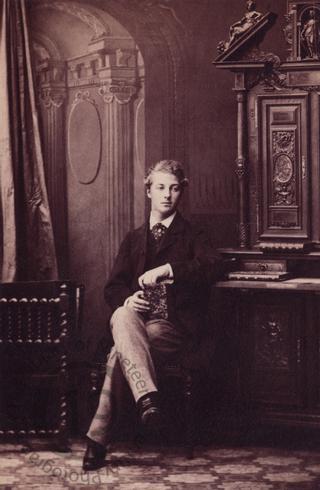
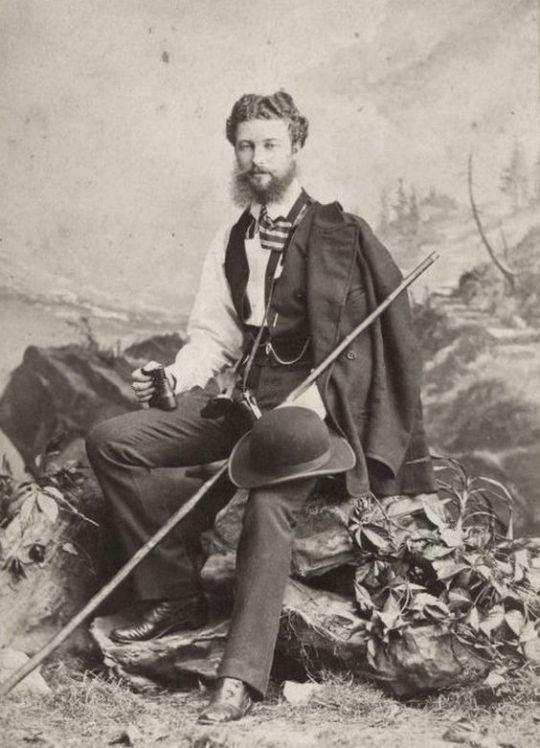

17 notes
·
View notes
Text


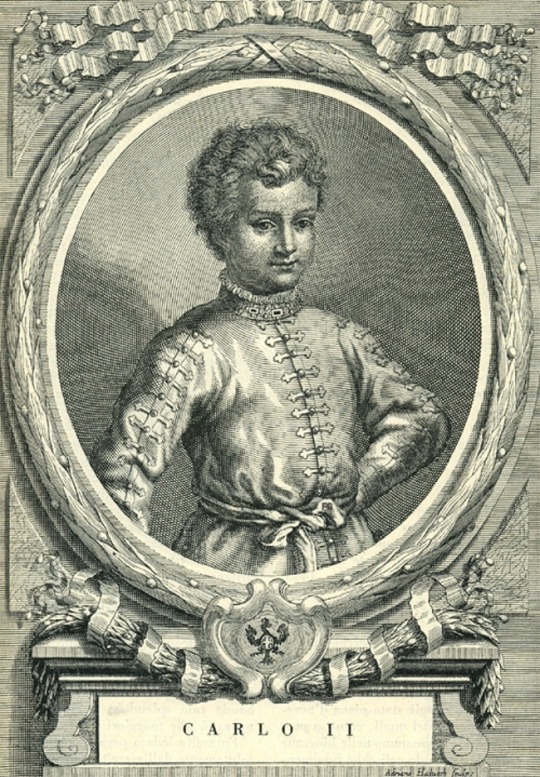







Royal Birthdays for today, June 23rd:
Ptolemy XV Philopator Philometor Caesar, Pharaoh of Egypt, 47 B.C.
Margaret of Denmark, Queen of Scotland, 1456
Charles II, Duke of Savoy, 1489
Shah Shuja, Mughal Prince, 1616
Marie Leszczyńska, Queen of France, 1703
Joséphine de Beauharnais, Empress of the French, 1763
Edward VIII, King of the United Kingdom, 1894
Tribhuhvan Bir Bikram Shah, King of Nepal, 1906
Maria Carolina of Bourbon-Parma, Marchioness of Sala, 1974
Maria-Carolina of Bourbon-Two Sicilies, Duchess of Palermo, 2003
#caesarion#Marie Leszczyńska#josephine de beauharnais#margaret of denmark#charles ii#Shah Shuja#edward viii#Tribhuh#van Bir Bikram Shah#Maria Carolina of Bourbon-Parma#Maria-Carolina of Bourbon-Two Sicilies#royal birthdays#long live the queue
5 notes
·
View notes